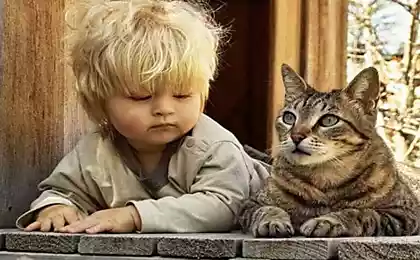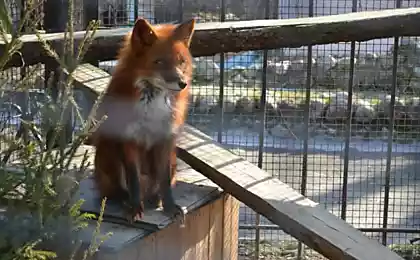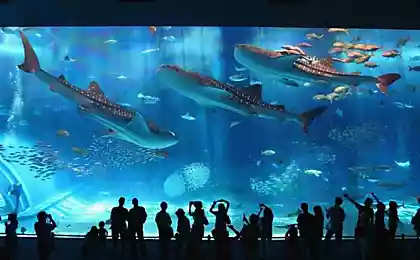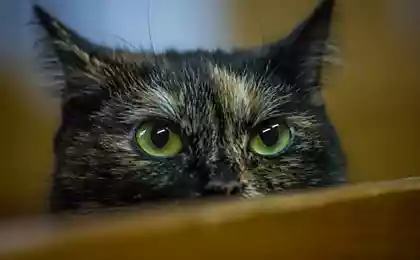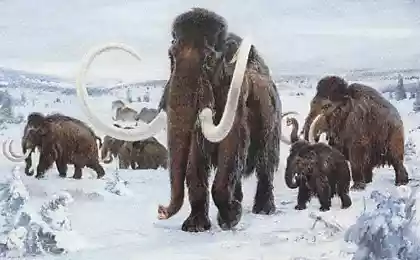1391
Scientists have discovered a new species of animals
Snub-nosed monkey, sneezing in the rain (RHINOPITHECUS STRYKERI)
In 2010 a group of Swiss primatologist Thomas Gayssmana found in northern Myanmar snub-nosed monkey, which the nostrils are covered with nothing. Because of this, she sneezes when it rains. To protect him, she lowers her face down and hides his head between his knees. In 2011, officially described the view, in the same year found a small population in China, and then it just started to guard.
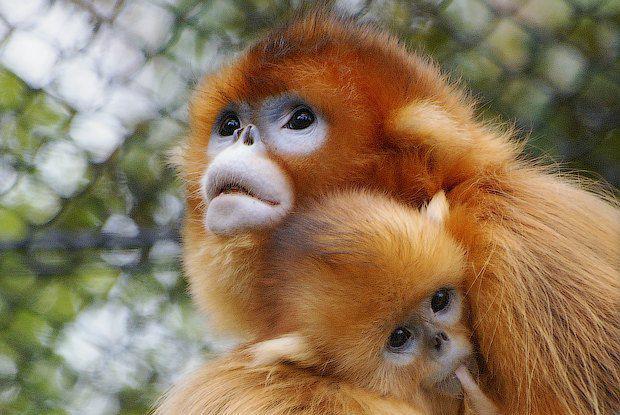
Egyptian wolves, which took over the jackals (CANIS LUPUS LUPASTER)
The fact that live in North Africa Little Wolf, Aristotle wrote more, but at the beginning of the XX century German zoologist Ernst Schwarz described them as jackals. The debate, to whom they refer, continued until 2011, when the examination of the DNA showed that their closest relatives - wolves. As it turned out, were the ancestors of wolves in Africa 3 million years ago, and only then spread all over the northern hemisphere. Now representatives of the species, there are only a few dozen, and laws protecting them, do not exist.

Monkey expressive look (CERCOPITHECUS LOMAMIENSIS)
A group of scientists under the direction of biologist John Hart discovered monkey lesulu in 2007 in the central part of the Democratic Republic of the Congo, home of the headmaster, was holding a monkey in a cage. He got it from a local resident, shot her mother. Because hunters mean facing extinction: until 2012, when he was officially recognized and described, count on help from the government did not succeed. Soon the forest inhabited by monkeys, should be part of the protected area. Zoologists suspect lesuly except in the area can live and other types that are not described by science.
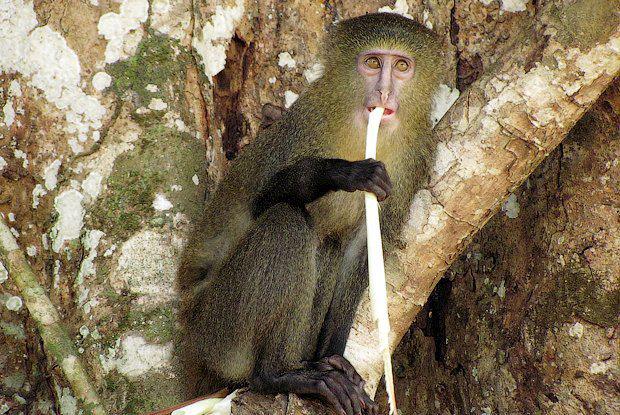
Rats that sucks the prey (PAUCIDENTOMYS VERMIDAX)
In 2012, the Australian Kevin Rowe discovered in Indonesia kind of rats that eat only worms. Two front teeth are used to break down the food sucks - bite and chew the teeth they can not. The discovery shows that the representatives of mammals may lose key anatomical feature, if it is not needed in an environment where he lives.
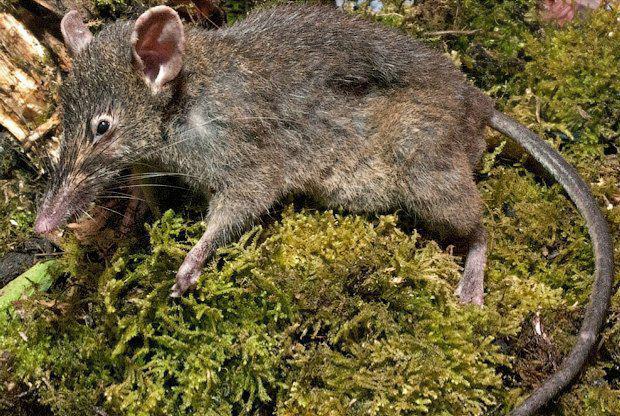
Small olingito, which mixed with a close view (BASSARICYON NEBLINA)
In the 60s female olingito, the smallest representative of the family coon mistakenly placed in the zoo in Washington, along with the usual Olinga. She was transported from the zoo to the zoo, but she did not mate with anyone, and died. In fact, to distinguish it as a separate species, the scientists took 30 years. In 2003, zoologist Christopher Heldzhen saw at the Chicago Field Museum of Natural History remains of an animal, like a Olinga. The structure of the skull and the skin tone seemed unusual to him, and he decided to make an examination. To prove that the remains belong to a new species in 2006 Heldzhenu had an expedition to the South American Andes. For the week, scientists found four subspecies olingito. The next few years they spent on it, to outline the habitat and redraw the family tree raccoon, and in 2013 presented the description of a new species.
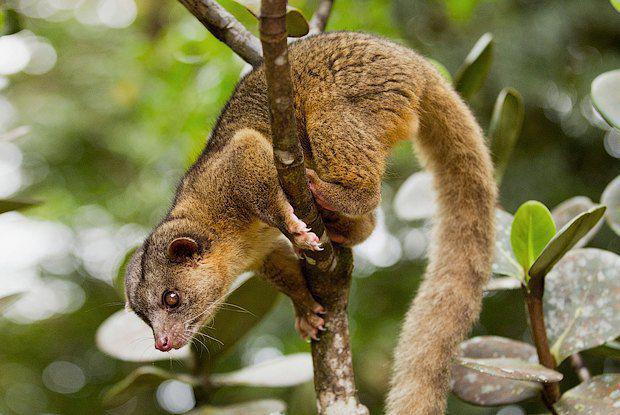
Greater dwarf lemur with confusing classification (CHEIROGALEUS LAVASOENSIS)
Classification greater dwarf lemur is still in flux. It is assumed that there are several undescribed species as their population is very scattered. Since the beginning of the 2000s, the classification is extended, then narrowed. Last for today recognized species found in the south of Madagascar in the mountains Lavasoa, first discovered in 2001, but only formally presented in 2013: the fact to collect and analyze the genetic material took more than ten years.

Wild cats that resemble miniature jaguars (LEOPARDUS GUTTULUS)
In 2013, scientists in Brazil have identified oncilla subspecies living in the south, a separate species. DNA examination conducted by Eduardo Eyzirikom showed that they did not interbreed with other subspecies that live in the north, and from the Geoffroy's Cat, next door to them. Since the end of XX century oncilla considered vulnerable species, their populations are threatened poaching and deforestation.
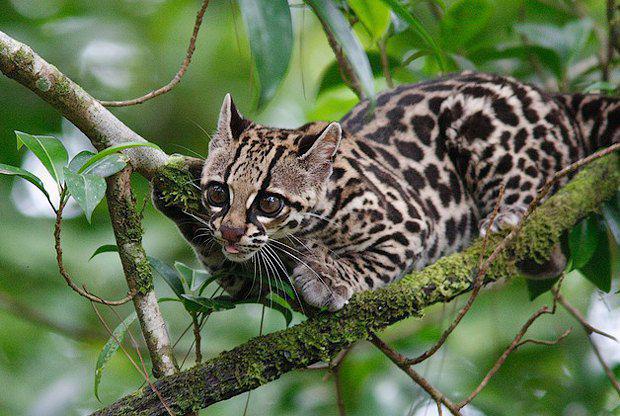
Marsupial mice die from stress during mating (ANTECHINUS ARKTOS)
Since 2012, mammalogy (mammals specialist) Andrew Baker found in eastern Australia, three new species of marsupial mice. Last for today - it opened in 2014 black-tailed marsupial mouse, similar to the relatives of the fact that males rarely live longer than a year. Sexual maturity at them comes in 9 months, and following this mating season they mate a few weeks for 12-14 hours. Because of the stress in the body accumulates excess amount of male hormone dangerous, and they soon die.

Small shrew with a trunk (MACROSCELIDES MICUS)
The first representative of the smallest species of the family elephant shrew discovered in 2006 in the desert in the north-west of Namibia. One of shrews, produced by employees of the California Academy of Sciences, different reddish coat color. Examination of DNA did not give conclusive results, because of what the next few years it took to catch the 15 new shrews. That opened a new species, scientists announced in June this year.

Giant pékari, which was considered extinct (PECARI MAXIMUS)
Dutch scientist Marc van Roosmalen discovered the giant peccary in 2000 in the tropical forests in the south of Brazil. Seven years later, officially described the view from the other bakers, they differ in that they live in pairs with 1-2 cubs. Disputes about separate species or not, continues: some scientists believe the results of the DNA examination and unconvincing claim that the giant peccary are collared peccary.
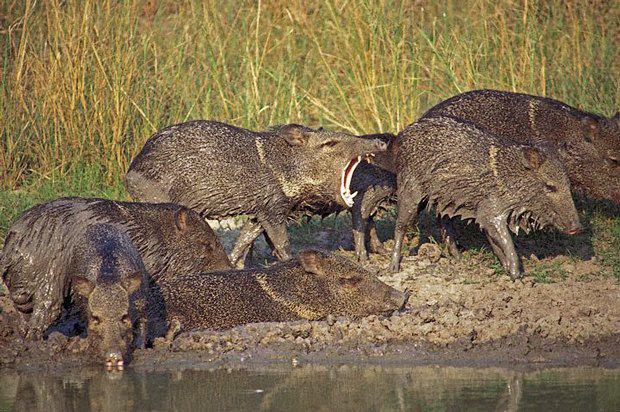
Source: www.lookatme.ru
In 2010 a group of Swiss primatologist Thomas Gayssmana found in northern Myanmar snub-nosed monkey, which the nostrils are covered with nothing. Because of this, she sneezes when it rains. To protect him, she lowers her face down and hides his head between his knees. In 2011, officially described the view, in the same year found a small population in China, and then it just started to guard.

Egyptian wolves, which took over the jackals (CANIS LUPUS LUPASTER)
The fact that live in North Africa Little Wolf, Aristotle wrote more, but at the beginning of the XX century German zoologist Ernst Schwarz described them as jackals. The debate, to whom they refer, continued until 2011, when the examination of the DNA showed that their closest relatives - wolves. As it turned out, were the ancestors of wolves in Africa 3 million years ago, and only then spread all over the northern hemisphere. Now representatives of the species, there are only a few dozen, and laws protecting them, do not exist.

Monkey expressive look (CERCOPITHECUS LOMAMIENSIS)
A group of scientists under the direction of biologist John Hart discovered monkey lesulu in 2007 in the central part of the Democratic Republic of the Congo, home of the headmaster, was holding a monkey in a cage. He got it from a local resident, shot her mother. Because hunters mean facing extinction: until 2012, when he was officially recognized and described, count on help from the government did not succeed. Soon the forest inhabited by monkeys, should be part of the protected area. Zoologists suspect lesuly except in the area can live and other types that are not described by science.

Rats that sucks the prey (PAUCIDENTOMYS VERMIDAX)
In 2012, the Australian Kevin Rowe discovered in Indonesia kind of rats that eat only worms. Two front teeth are used to break down the food sucks - bite and chew the teeth they can not. The discovery shows that the representatives of mammals may lose key anatomical feature, if it is not needed in an environment where he lives.

Small olingito, which mixed with a close view (BASSARICYON NEBLINA)
In the 60s female olingito, the smallest representative of the family coon mistakenly placed in the zoo in Washington, along with the usual Olinga. She was transported from the zoo to the zoo, but she did not mate with anyone, and died. In fact, to distinguish it as a separate species, the scientists took 30 years. In 2003, zoologist Christopher Heldzhen saw at the Chicago Field Museum of Natural History remains of an animal, like a Olinga. The structure of the skull and the skin tone seemed unusual to him, and he decided to make an examination. To prove that the remains belong to a new species in 2006 Heldzhenu had an expedition to the South American Andes. For the week, scientists found four subspecies olingito. The next few years they spent on it, to outline the habitat and redraw the family tree raccoon, and in 2013 presented the description of a new species.

Greater dwarf lemur with confusing classification (CHEIROGALEUS LAVASOENSIS)
Classification greater dwarf lemur is still in flux. It is assumed that there are several undescribed species as their population is very scattered. Since the beginning of the 2000s, the classification is extended, then narrowed. Last for today recognized species found in the south of Madagascar in the mountains Lavasoa, first discovered in 2001, but only formally presented in 2013: the fact to collect and analyze the genetic material took more than ten years.

Wild cats that resemble miniature jaguars (LEOPARDUS GUTTULUS)
In 2013, scientists in Brazil have identified oncilla subspecies living in the south, a separate species. DNA examination conducted by Eduardo Eyzirikom showed that they did not interbreed with other subspecies that live in the north, and from the Geoffroy's Cat, next door to them. Since the end of XX century oncilla considered vulnerable species, their populations are threatened poaching and deforestation.

Marsupial mice die from stress during mating (ANTECHINUS ARKTOS)
Since 2012, mammalogy (mammals specialist) Andrew Baker found in eastern Australia, three new species of marsupial mice. Last for today - it opened in 2014 black-tailed marsupial mouse, similar to the relatives of the fact that males rarely live longer than a year. Sexual maturity at them comes in 9 months, and following this mating season they mate a few weeks for 12-14 hours. Because of the stress in the body accumulates excess amount of male hormone dangerous, and they soon die.

Small shrew with a trunk (MACROSCELIDES MICUS)
The first representative of the smallest species of the family elephant shrew discovered in 2006 in the desert in the north-west of Namibia. One of shrews, produced by employees of the California Academy of Sciences, different reddish coat color. Examination of DNA did not give conclusive results, because of what the next few years it took to catch the 15 new shrews. That opened a new species, scientists announced in June this year.

Giant pékari, which was considered extinct (PECARI MAXIMUS)
Dutch scientist Marc van Roosmalen discovered the giant peccary in 2000 in the tropical forests in the south of Brazil. Seven years later, officially described the view from the other bakers, they differ in that they live in pairs with 1-2 cubs. Disputes about separate species or not, continues: some scientists believe the results of the DNA examination and unconvincing claim that the giant peccary are collared peccary.

Source: www.lookatme.ru

